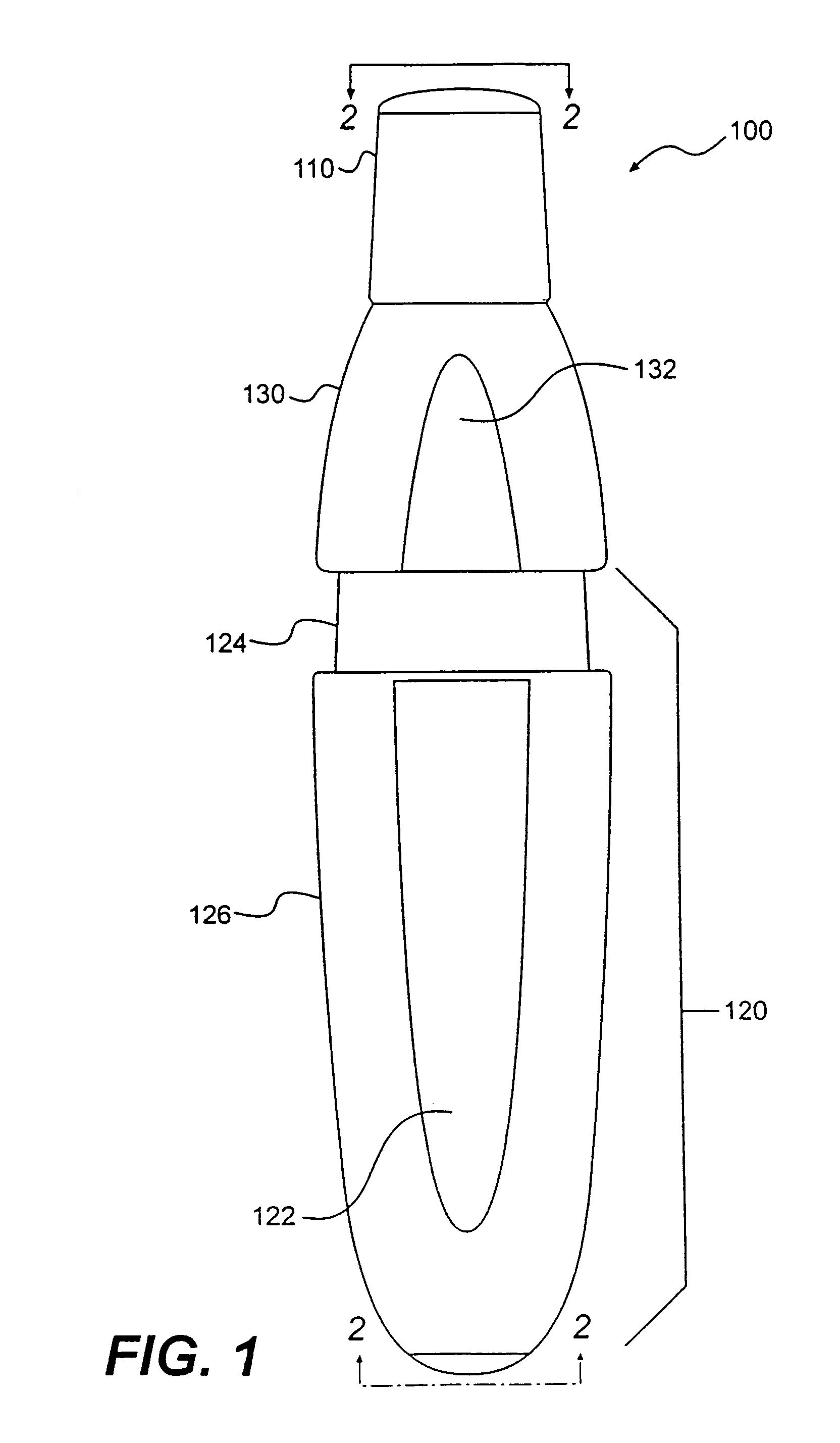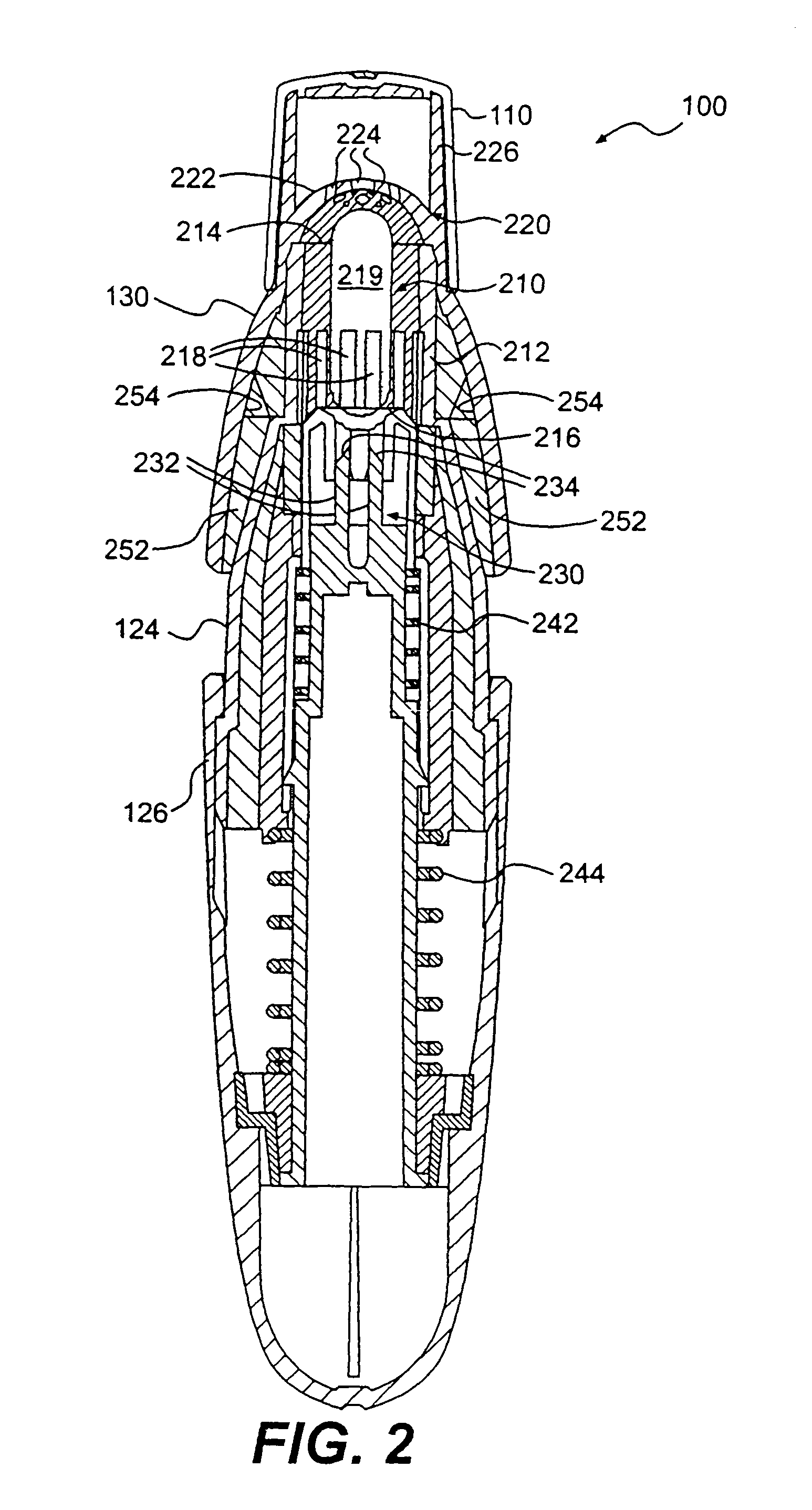Low dose pharmaceutical powders for inhalations
a technology of pharmaceutical powders and inhalation, which is applied in the direction of respirator, drug composition, transportation and packaging, etc., can solve the problems of reducing or delay the efficiency of drug delivery or therapeutic onset, and achieve good to excellent high dispersibility, and good deposition in the lung
- Summary
- Abstract
- Description
- Claims
- Application Information
AI Technical Summary
Benefits of technology
Problems solved by technology
Method used
Image
Examples
example 1
[0118]Particles containing epinephrine made in accordance with the method described in U.S. application Ser. No. 60 / 425,349, which is incorporated herein by reference, were used.
example 2
[0119]Applicant employed two methods to obtain a measure of the emitted dose. A gravimetric analysis and a chemical analysis. This example is a standard operating procedure (SOP) describing the method for obtaining the emitted dose using gravimetric analysis. This procedure relates to the release and stability testing of Applicant's products.
[0120]Unless otherwise indicated the following equipment, supplies, reagents and materials were used for both the Gravimetric analysis and the chemical analysis.[0121]47 mm filter holder (e.g. BGI, Inc., Waltham, Mass.)[0122]Filter holder stand[0123]Flow meter (e.g. Model 32915-70 or equivalent, Cole-Parmer, Vernon Hills, Ill.)[0124]Flow controller (e.g. Model TPK, Erweka USA, Inc, Milford, Conn.)[0125]Vacuum pump (e.g. Model 1023-101Q-G608X, Gast MFG. CORP., Benton Harbor, Mich.)[0126]Silicon Vacuum tubing with inner diameter (ID) equal to 8±0.5 mm, outer diameter (OD) equal to 14±0.5 mm, and length equal to 50±10 cm (e.g. Peroxide-Cured Silico...
example 3
[0137]Another procedure followed for obtaining the emitted dose was a chemical analysis. As with the Example above, the following was used:[0138]47 mm filter holder (e.g. BGI, Inc., Waltham, Mass.)[0139]Filter holder stand[0140]Flow meter (e.g. Model 32915-70 or equivalent, Cole-Parmer, Vernon Hills, Ill.)[0141]Flow controller (e.g. Model TPK, Erweka USA, Inc, Milford, Conn.)[0142]Vacuum pump (e.g. Model 1023-IOIQ-G608X, Gast MFG. CORP., Benton Harbor, Mich.)[0143]Silicon Vacuum tubing with inner diameter (ID) equal to 8±0.5 mm, outer diameter (OD) equal to 14±0.5 mm, and length equal to 50±10 cm (e.g. Peroxide-Cured Silicon tubing, Cole-Parmer, Vernon Hills, Ill.)[0144]Brass tubing connector with ID≧8 mm (e.g. Barbed fitting, Cole-Parmer, Vernon Hills, Ill.)
However for the chemical analysis, the following cleaning solvents, dissolving solvents and filters were used on the various parts of the apparatus.
[0145]
Cleaning solventDissolving solventFilter100% methanol100% HPLC gradeA / E 47...
PUM
 Login to View More
Login to View More Abstract
Description
Claims
Application Information
 Login to View More
Login to View More - R&D
- Intellectual Property
- Life Sciences
- Materials
- Tech Scout
- Unparalleled Data Quality
- Higher Quality Content
- 60% Fewer Hallucinations
Browse by: Latest US Patents, China's latest patents, Technical Efficacy Thesaurus, Application Domain, Technology Topic, Popular Technical Reports.
© 2025 PatSnap. All rights reserved.Legal|Privacy policy|Modern Slavery Act Transparency Statement|Sitemap|About US| Contact US: help@patsnap.com



